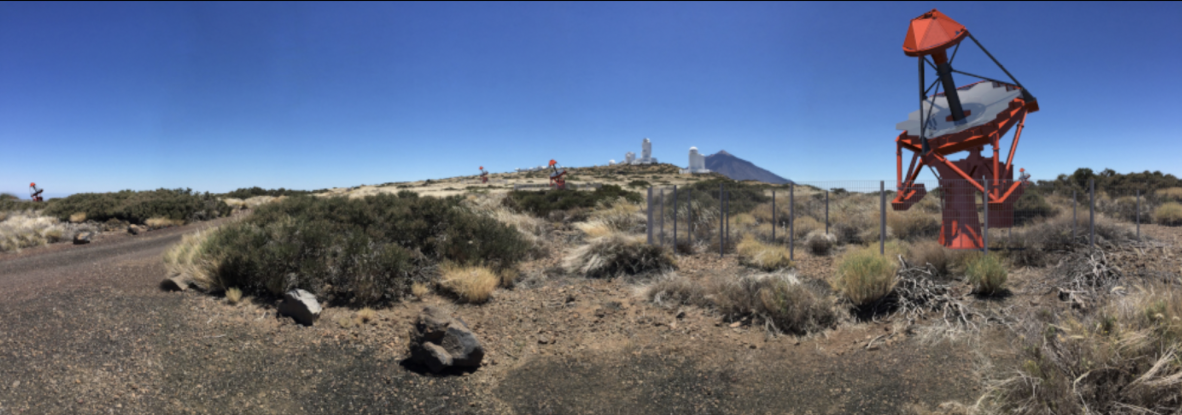
The ASTRI Mini-Array (MA) is an INAF ground-based project aimed to construct, deploy and operate a set of nine identical dual-mirrors Cherenkov gamma-ray telescopes. The ASTRI Mini-Array will exploit the imaging atmospheric Cherenkov technique to measure the energy, direction and arrival time of gamma-ray photons arriving at the Earth from astrophysical sources. In the almost unexplored energy range 1-300 TeV this technique requires an array of optical telescopes (~ 4 m in diameter) at a site located at an altitude of > 2000m. The telescope shall have UV-optical reflecting mirrors focusing the Cherenkov light produced by atmospheric particle cascades (air-showers) onto ultrafast (nanosecond timescale) cameras. Most of the collected data will come from the large number of charged cosmic-ray initiated air-showers, that shall also be recorded, then appropriate data analysis methods shall be employed to reduce the level of this background and allow efficient detection of gamma-ray coming from astronomical sources.
The site selected for the installation and operation of the ASTRI Mini-Array is the Observatorio del Teide in Tenerife, operated by the Instituto de Astrofisica de Canarias (IAC) and located on Mount Teide (~2400 m a.s.l.) in Tenerife (Canary Islands, Spain).
Besides the gamma-ray scientific program, the ASTRI Mini-Array will also perform:
- Stellar Hambury-Brown intensity interferometry: each of the telescopes of the ASTRI Mini-Array will be equipped with an intensity interferometry module. The Mini-Array layout with its very long baselines (hundreds of meters), will allow, in principle, to obtain angular resolutions as good as 50 micro-arcsec. With this level of resolution, it will be possible to reveal details on the surface and of the environment surrounding bright stars on the sky opening unprecedented frontiers in some of the major topics in stellar astrophysics.
- Direct measurements of cosmic rays: 99% of the observable component of the Cherenkov light is hadronic in nature. Even if the main challenge in detecting gamma rays is to distinguish them from the much wider background of hadronic Cosmic Rays, this background, recorded during normal gamma-ray observations, will be used to perform direct measurements and detailed studies on the Cosmic Rays. To exploit the cosmic-ray science the ASTRI Array telescope shall be able to be pointed at large (>70°) zenith angles.
INAF/OAS Bologna researchers have the following responsibilities:
- Responsability of the on-site software SCADA: SCADA is a software system controlling all the operations carried out at the MA site. SCADA has an array control system that interfaces and communicates with all assemblies and dedicated software installed at the site. It is responsible for the execution of the Scheduling Blocks to perform observations. SCADA shall normally be supervised by the Operator but performs the operations in an automated way. It shall provide scientific data, logging, monitoring, alarm, and online observation quality information to help assess the quality of data during the acquisition.
- Responsability of the on-site computing infrastructure
- Responsability of the Array Data Acquisition System
- Responsaiblity of the Online Observation Quality System
- Some members are also part of the software and system engineering office of the ASTRI Mini-Array project with roles of responsibility.
